Learn How To Compost!
You have probably heard of composting before, but what is it exactly? Composting is a natural way to recycle decomposed organic materials. This process of decomposition creates compost, or rich soil.
Once-living organisms will decompose into compost. Composting organic waste at home will return nutrients directly back to the soil to support the “circle of life,” as nature intended.
THERE ARE SEVERAL BENEFITS TO CONSIDER:
 Recycle household waste
Recycle household waste
If you already put your recyclables in the recycling bin, you’re on the right track. Composting organic waste can reduce garbage waste by up to 30%.

Condition soil
Composting directly conditions soil by creating nutrient-rich humus for lawn and garden use; these nutrients feed grass and plants and help retain soil moisture.
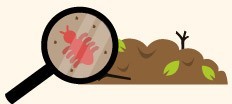
Support healthy soil
Composting provides micro-scopic, beneficial microor-ganisms that help aerate soil, decompose organic materials used by plants, and safeguard against plant disease.
![]() Protect the environment
Protect the environment
Natural composting can enrich household landscaping without the use of harmful chemical fertilizers.
![]() Save money by reducing water loss
Save money by reducing water loss
One direct benefit of composting is its ability to improve soil’s water-holding capacity; this reduces soil water loss and costly water bills
![]() Conserve natural resources
Conserve natural resources
Composting at home keeps excess garbage out of landfills, which cuts down on fuel needed to transport, process, and compress waste.
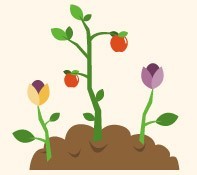
Enjoy the fruits of your labors
Once you get started in the process, composting can be satisfying as you make environmentally-friendly choices to reduce household waste and enrich garden soil.
IF YOU’RE NEW TO THE COMPOSTING GAME, here are a few fun facts you may not know about repurposing waste
- THE AVERAGE PERSON GENERATES 4.5 POUNDS OF TRASH PER DAY, OR 1.5 TONS OF SOLID WASTE PER YEAR.
- According to the EPA, up to 75% of solid waste is recyclable; 60% of landfill waste is organic and compostable.
- The average American household generates roughly 650 pounds of compostable materials each year.
- If the 21.5 million annual tons of food waste were composted, it could reduce greenhouse gas emissions equivalent to taking over 2 million cars off the road.
- Composting can reduce yard waste by 50% to 75%.
- Composting can take as little as 10 minutes a week, on average.
- Composting cuts down on chemical pesticide and fertilizer use.
- Composting can reduce outdoor water expenses by up to 30%.
- Composting can bind heavy metals and contaminants to reduce their absorption through plants.
- Compost decreases landfill waste, thus reducing one of the most harmful greenhouse gases on the planet—methane gas.
Some common misconceptions of composting is that it’s too complicated, it’ll smell funny, and that it’s messy. These are all true if you compost the wrong way. Composting the right way is a very simple approach: Simply layer organic materials and a dash of soil to create a concoction that turns into humus (the best soil builder around!).
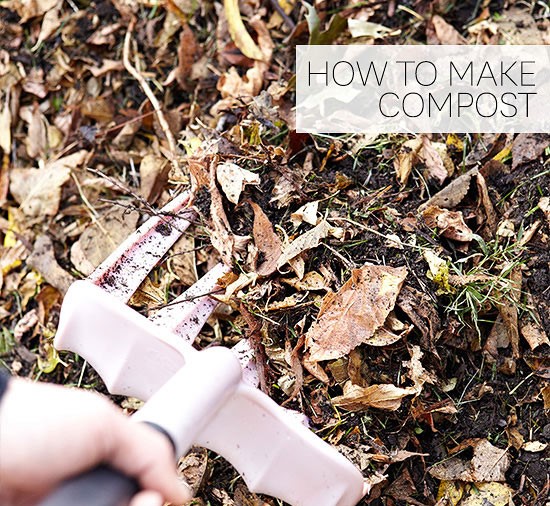 Before you start piling on, recognize that there are two types of composting: cold and hot. Cold composting is as simple as collecting yard waste or taking out the organic materials in your trash (such as fruit and vegetable peels, coffee grounds and filters, and eggshells) and then corralling them in a pile or bin. Over the course of a year or so, the material will decompose.
Before you start piling on, recognize that there are two types of composting: cold and hot. Cold composting is as simple as collecting yard waste or taking out the organic materials in your trash (such as fruit and vegetable peels, coffee grounds and filters, and eggshells) and then corralling them in a pile or bin. Over the course of a year or so, the material will decompose.
Hot composting is for the more serious gardener but a faster process—you’ll get compost in one to three months during warm weather. Four ingredients are required for fast-cooking hot compost: nitrogen, carbon, air, and water. Together, these items feed microorganisms, which speed up the process of decay. With these simple steps on how to compost, you’ll have all of the bragging rights of a pro!
What You Need
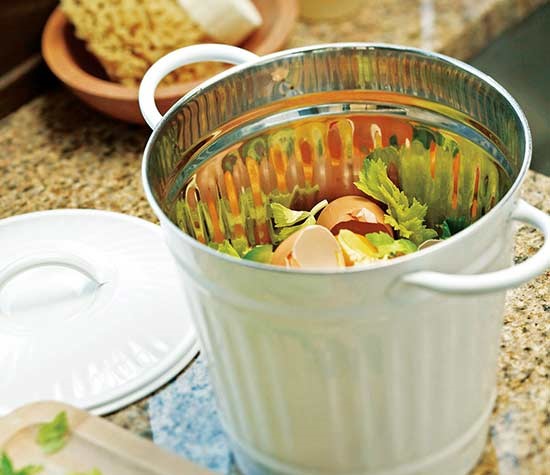
- Fruit scraps
- Vegetable scraps
- Coffee grounds
- Eggshells
- Grass and plant clippings
- Dry leaves
- Finely chopped wood and bark chips
- Shredded newspaper
- Straw
- Sawdust from untreated wood
Composting Tip: Think twice before adding onions and garlic to your compost pile. It is believed that these vegetables repel earthworms, which are a vital part of your garden.
What NOT to Compost
- Anything containing meat, oil, fat, or grease
- Diseased plant materials
- Sawdust or chips from pressure-treated wood
- Dog or cat feces
- Weeds that go to seed
- Dairy products
Step 1: Combine Green and Brown Materials
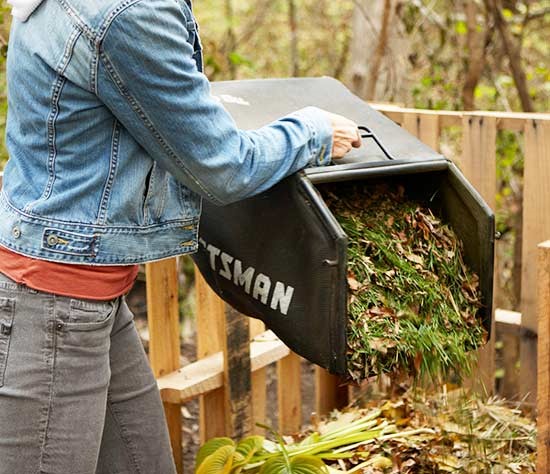 To create your own organic hot-compost heap, wait until you have enough materials to make a pile at least 3 feet deep. You are going to want to combine your wet, green items with your dry, brown items. Start building your compost pile, alternating brown and green items. If your compost pile looks too wet and smells, add more brown items. If you see it looks extremely brown and dry, add green items and water to make it slightly moist.
To create your own organic hot-compost heap, wait until you have enough materials to make a pile at least 3 feet deep. You are going to want to combine your wet, green items with your dry, brown items. Start building your compost pile, alternating brown and green items. If your compost pile looks too wet and smells, add more brown items. If you see it looks extremely brown and dry, add green items and water to make it slightly moist.
Step 2: Water Your Pile
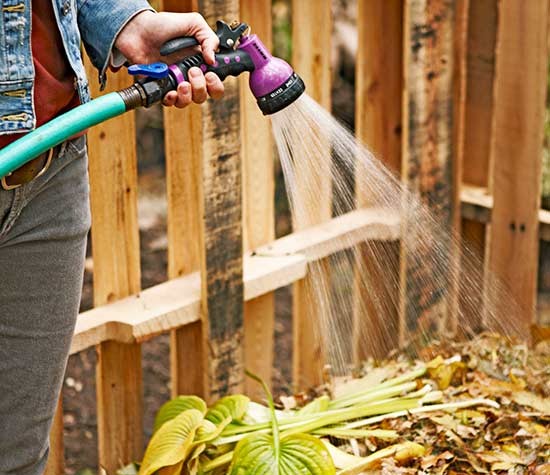 Sprinkle water over the pile regularly so it has the consistency of a damp sponge. Don’t add too much water, otherwise the microorganisms in your pile will become waterlogged and drown. If this happens, your pile will rot instead of compost. Monitor the temperature of your pile with a thermometer to be sure the materials are properly decomposing. Or, simply reach into the middle of pile with your hand. Your compost pile should feel warm.
Sprinkle water over the pile regularly so it has the consistency of a damp sponge. Don’t add too much water, otherwise the microorganisms in your pile will become waterlogged and drown. If this happens, your pile will rot instead of compost. Monitor the temperature of your pile with a thermometer to be sure the materials are properly decomposing. Or, simply reach into the middle of pile with your hand. Your compost pile should feel warm.
Step 3: Stir Up Your Pile
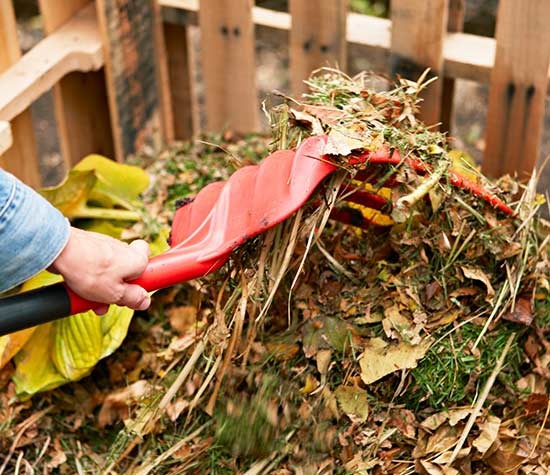 During the growing season, you should provide the pile with oxygen by turning it once a week with a garden fork. The best time to turn the compost is when the center of the pile feels warm or when a thermometer reads between 130 and 150 degrees F. Stirring up the pile will help it cook faster and prevents material from becoming matted down and developing an odor. At this point, the layers have served their purpose of creating equal amounts of green and brown materials throughout the pile, so stir thoroughly.
During the growing season, you should provide the pile with oxygen by turning it once a week with a garden fork. The best time to turn the compost is when the center of the pile feels warm or when a thermometer reads between 130 and 150 degrees F. Stirring up the pile will help it cook faster and prevents material from becoming matted down and developing an odor. At this point, the layers have served their purpose of creating equal amounts of green and brown materials throughout the pile, so stir thoroughly.
Step 4: Feed Your Garden
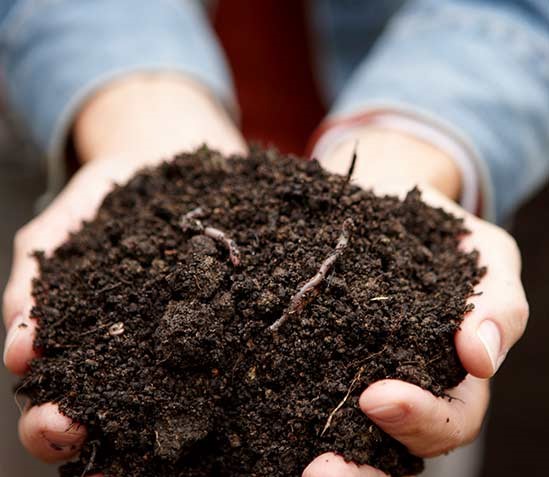 When the compost no longer gives off heat and becomes dry, brown, and crumbly, it’s fully cooked and ready to feed to the garden. Add about 4 to 6 inches of compost to your flower beds and into your pots at the beginning of each planting season. With just a few kitchen scraps and some patience, you’ll have the happiest garden you can have.
When the compost no longer gives off heat and becomes dry, brown, and crumbly, it’s fully cooked and ready to feed to the garden. Add about 4 to 6 inches of compost to your flower beds and into your pots at the beginning of each planting season. With just a few kitchen scraps and some patience, you’ll have the happiest garden you can have.

 Protect the environment
Protect the environment Save money by reducing water loss
Save money by reducing water loss Conserve natural resources
Conserve natural resources
Comments are closed.